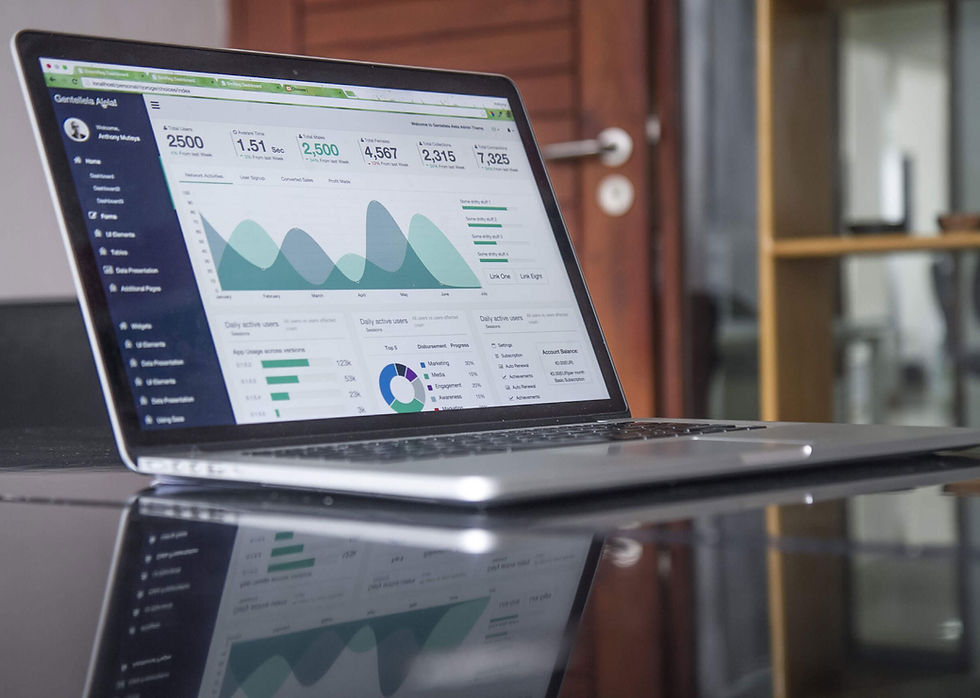What Is Cashflow Forecasting?
- Guest Post
- Mar 9, 2022
- 3 min read
Updated: May 19, 2022
In Short, Cashflow forecasting is an important aspect of running any business, and it can help you manage your assets and liabilities so that you don’t run into cash flow problems during leaner times.
Read on to learn more about what cashflow forecasting is and how you can use it to better prepare your business for success in the future.

Defining Cash Flow
In terms of cash flow forecasting, cash flow refers to what’s left after all business expenses have been paid.
These expenses include things like rent, utilities, taxes and payroll (wages). The sum of all these expenses is known as your operating costs.
Because most businesses have fixed costs that don’t change much month to month (rent being one example), a good forecast will show you how much money you can expect to have left over after your operating costs are deducted from your total revenue. This figure is also known as a business’s profit margin or net income.
Why Do Businesses Need Cash Flow Forecasts?
A lot of people think they can be successful if they have a great product or service, without thinking about cash flow.
Here's why businesses need to consider their cash flow forecasts: To know how much money is coming in and out of your business - This can be hard for startups, especially if you’re not receiving any money from outside investors.
However, even established companies with multiple income streams should take a good look at what their income is going to be like over a specific period.
If you know how much money you're going to make in a month, it helps answer questions such as: Do I have enough capital left over to pay my employees and cover overhead costs? When do I need more money from outside investors?
What Are the Steps to Create a Projected Cash Flow Report?
There are various steps to create a projected cash flow report. Your company's accountant, for example, can give you details on what's required for your business. But in general, here are some of the steps involved:
First, determine your business' total income and expenses for a given period of time (e.g., one month).
Next, take note of whether there are any known one-time expenses that will come up during that period (e.g., an upcoming convention).
Then divide your total expenses by your total income to arrive at your projected monthly cash flow margin.
If you have enough money coming in each month to cover all of your expected expenses—and you've accounted for any other factors—you should be fine until those one-time events occur.
How Long Does It Take to Complete a Projected CF Report, and How Much Does it Cost?
When we talk about cash flow, we're usually referring to operating cash flow. Operating cash flow is defined as a business's net income plus depreciation, amortization, deferred taxes and changes in working capital.
In other words, it's a view of how much cash your business brings in over time. As with any financial metric, there are different ways to measure cash flow, but project-level profit (net income) is pretty reliable when you have an established company with recurring revenue and steady expenses.
Where Should I Get Help Creating My Projected CF Report?
If you're going to be starting a new business, it's a good idea to learn more about cash flow forecasting. A CF report is basically an estimate of how much money your company will bring in and out over a set period of time.
To get it right, you'll want to work with someone who has experience creating these types of reports, such as an accountant or financial planner.
To start, ask around for recommendations or search online for CPAs and other money professionals near you that have experience helping startups and small businesses.
One place to check is your local SCORE chapter; they often connect small business owners with free advice from experts in their communities.
Cashflow Forecasting - The Bottom Line
As you’ve probably surmised from what we’ve already covered, cash flow forecasting is used to predict a company’s future cash flows, and is very important.
The process goes far beyond simply listing out expected revenues and expenses over a given period of time; instead, it helps companies make decisions based on whether or not they will have enough money at their disposal to meet upcoming obligations.
It looks past just today or tomorrow in order to help guide larger decision-making processes for longer periods of time. In other words, it allows companies (and people) to see how current actions will affect them down the road. And that can be a powerful tool indeed.
Related Content


